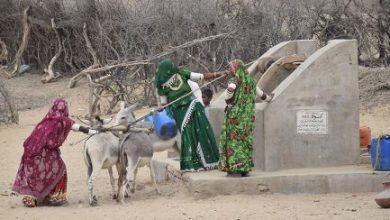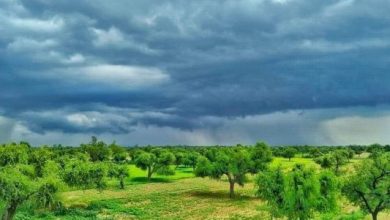
As the monsoon clouds approach Tharparkar in June and July, anticipation fills the air. For months, the land has waited patiently. Then, with the arrival of the first showers, Karoonjhar breathes again.
- Despite its natural and cultural importance, Karoonjhar faces serious threats.
- There is an urgent need to declare Karoonjhar Hills as a protected national heritage site
By Ali Nawaz Rahimoo
Tharparkar, often seen as a land of dust and drought, holds within its heart a rare gem the Karoonjhar Hills. These ancient granite formations, located in the Nagarparkar region near the India-Pakistan border, tell stories of history, spirituality, and natural splendor. While the hills remain dry and rugged for most of the year, their true beauty is unveiled after the monsoon rains, when Karoonjhar transforms into a stunning green paradise one of the most mesmerizing natural wonders of Sindh.
 The Monsoon Miracle: From Dry to Divine
The Monsoon Miracle: From Dry to Divine
As the monsoon clouds approach Tharparkar in June and July, anticipation fills the air. For months, the land has waited patiently. Then, with the arrival of the first showers, Karoonjhar breathes again. The lifeless, stony slopes are suddenly covered in greenery. Wild grasses, desert flowers, and medicinal herbs sprout from the cracks in the rocks. Waterfalls form in the hills, flowing into small seasonal streams and ponds (locally known as dhandhs), inviting locals, livestock, and wildlife to rejoice. Children bathe in the natural streams, women collect fresh herbs, and men bring cattle to graze on the hills’ new grass cover. It’s a short season, but one that revives life across the region.
 A Cultural and Spiritual Landscape
A Cultural and Spiritual Landscape
Karoonjhar is more than just a geographical formation—it is a sacred and cultural symbol of Tharparkar. The hills are dotted with centuries-old Jain temples, ancient step-wells, and shrines of Sufi saints, like the shrine of Rooplo Kolhi, a local hero who resisted British colonization. During the rainy season, pilgrims and tourists flock to these historical sites. Local Hindus visit the Bhodesar temples, a symbol of Nagarparkar ancient Jain heritage, while Muslims pay respects at spiritual sites built into the hillsides. The harmony of diverse cultures and faiths, coexisting peacefully in the hills, adds a unique spiritual flavor to the scenic beauty. In recent years, Karoonjhar has gained attention as an eco-tourism destination. After rain, the area becomes a hotspot for nature lovers, hikers, photographers, and spiritual travelers. Visitors are drawn to the region’s untouched beauty, peaceful environment, and historical richness. What makes Karoonjhar ideal for eco-tourism is its natural simplicity. There are no commercial hotels, no loud traffic, and no artificial lights only local homestays, traditional food, and the serene sounds of birds and wind passing through the hills.
To preserve this beauty, locals and visitors are encouraged to follow eco-friendly practices:
- Avoid littering
- Protect plant and animal life
- Respect local traditions
- Support community-led tourism
 If managed properly, Karoonjhar can become a model for sustainable tourism in Pakistan, providing income for local communities without harming the environment.
If managed properly, Karoonjhar can become a model for sustainable tourism in Pakistan, providing income for local communities without harming the environment.
Despite its natural and cultural importance, Karoonjhar faces serious threats. Illegal granite mining, environmental degradation, and lack of regulation continue to endanger its fragile ecosystem. Activists, local journalists, and civil society have raised concerns about the long-term damage this could cause.
There is an urgent need to declare Karoonjhar Hills as a protected national heritage site. Conservation policies, strict regulation on mining, and investment in eco-tourism infrastructure (such as eco-lodges, guided trails, and waste management) are essential to safeguard this natural treasure. After the rain, the Karoonjhar Hills represent more than beauty; they symbolize life, renewal, and hope in the middle of the desert. They remind us that even the harshest landscapes can bloom with the right touch of nature and care. As we celebrate this transformation each year, we must also commit to preserving it for the future. Whether you are a tourist seeking peace, a historian exploring ancient cultures, or an environmentalist drawn to natural beauty, Karoonjhar Hills after rain offer a one-of-a-kind experience. Tharparkar’s green miracle is waiting quiet, sacred, and alive once again.
Read: Organic Agriculture in Thar Desert
______________
 Ali Nawaz Rahimoo, based in Umerkot, Sindh is a social development professional. He can be contacted on anrahimoo@gmail.com
Ali Nawaz Rahimoo, based in Umerkot, Sindh is a social development professional. He can be contacted on anrahimoo@gmail.com





Great ! I requested to all tourist visit karoojhar hills, District Tharparkar
After the rain, the hills of Nagarparkar become breathtakingly beautiful. I highly recommend tourists to visit Nagarparkar and explore the charm of Thar. Thar is a land of peace, simplicity, and spiritual richness